Sheep, solar go hand in hoof: Northfield farm’s flocks help keep solar sites shorn
|
Published: 10-18-2024 4:12 PM
Modified: 10-18-2024 8:10 PM |
HADLEY — Munching on goldenrod, white woodland aster, white clover, hairy vetch, birdsfoot trefoil, burdock and dandelions, more than 120 sheep are having much of their dietary needs met by a variety of grasses and plants growing at an 11-acre, 5.2-megawatt community solar site.
For more than two weeks this fall, the flock of sheep, ranging in age from 18 months to 6 years and accompanied by a few lambs, have been at the Nexamp solar field between the Hampshire Mall and the U.S. Fish and Wildlife regional headquarters, grazing on the warm-season vegetation and getting shelter and shade below the 9,200 elevated solar panels.
“Sheep do a really good job for most of the plants,” said Elspeth Robertson-DuBois of Finicky Farm LLC, a family-run farm based in Northfield.
The Hadley site is one of 10 solar arrays, covering nearly 150 acres, that are being put to a dual use by Finicky Farm, where the livestock are entirely forage-fed.
Robertson-DuBois said her family started the farm with the explicit purpose of contracting with solar companies to manage the landscape beneath the photovoltaic panels, buying about three dozen sheep initially. Three years ago, Finicky Farm contracted with Nexamp to graze the company’s solar arrays in Hadley, as well as in Amherst, Hatfield, Whately, Gardner and Fitchburg.
“Solar grazing is their purpose,” Robertson-DuBois said, as she watched the sheep taking care of the vegetation, making their way beneath the solar panels. “We’ve grown a lot since then.”
Keith Hevenor, communications manager for Nexamp, said the company, which is developing community solar projects across the country, has to pay for landscaping at all of its sites. The sheep are low-impact, and choosing sheep means the company can avoid tractors and brush hogs, which run on petrochemicals and can leave ruts between the rows of panels, as well as risk kicking up stones that could damage the panels.
“As a company with a sustainability mission, Nexamp would much rather partner with farmers, which is more sustainable and lower risk,” Hevenor said.
Article continues after...
Yesterday's Most Read Articles
“It’s also good business sense for us,” he said.
At what is known as the Hadley 3 solar site, the sheep are brought to the location, usually three times a year, and then stay around the clock. This year, the sheep first came in late May, returned again in early to mid-July, and made their final visit starting in late September.
Before unloading the farm’s trailers, which can transport up to 100 sheep, Robertson-DuBois sets up five 164-foot-long electric nets powered by a solar generator, which will restrict the sheep to a specific part of the solar field until they have completed their task.
The entire site, which also borders the Norwottuck Rail Trail, is surrounded by a perimeter fence that keeps curious people out of the site, along with deer, bears and predators such as coyotes and foxes that might cause harm to the sheep.
Once the sheep are in a field, Robertson-DuBois checks on them at least every other day, regularly replenishing a large trough of water. Another 75 sheep, she said, are at work grazing at another solar site.
The sheep will graze on many of the grasses and plants, though they won’t eat everything, typically eating what is healthy for them, Robertson-DuBois said. By moving them around among sites, they will get to eat more cold-weather plants that will give them additional nutrients.
“A balanced diet is most important, protein is most important,” Robertson-DuBois said.
As solar installations are put in, Hevenor said, Nexamp is intentional about what is planted, based in part on soil conditions, but also on the needs of the sheep.
“We are trying to plant according to the needs of our partners. The plants will be suitable for what they are looking for and will be good for the sheep,” Hevenor said.
Of the 300 or so Nexamp projects nationwide, which provide solar energy to residential, commercial and small nonprofit customers, 52 are now being used as grazing sites, an approach that began in 2019. Since then, Nexamp has been able to double the number of dual-use sites annually, with much of the grazing activity in the Northeast, including Massachusetts, New York and Maine.
While there is still some mowing required to knock down what the sheep won’t eat, including rushes and sedges and other woodier plants, along with cottonwoods that blow into the sites, Robertson-DuBois said only limited use of power equipment such as string trimmers and brush cutters is needed at sites where sheep are the main method of controlling vegetation.
Even though the sheep’s main task is to graze at solar sites, Robertson-Dubois said Finicky Farm is producing some grass-fed lamb for sale, understanding the importance lamb has in Islamic culture. “The long-term plan is to sell to the specialty market,” Robertson-DuBois said.
For Nexamp, the dual use of the company’s sites expands on the lease arrangements reached with landowners, who, in 25 years, could see the posts and panels removed and the land returning to full agricultural use. Dual-use operations, Hevenor said, help alleviate some of the concern that farmland is being paved over to accommodate solar.
“We are excited about this, that solar and agriculture are co-existing,” Hevenor said.

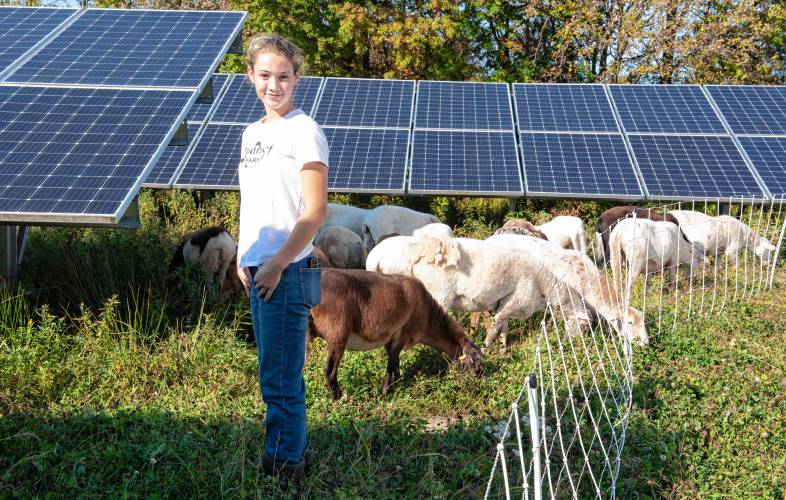
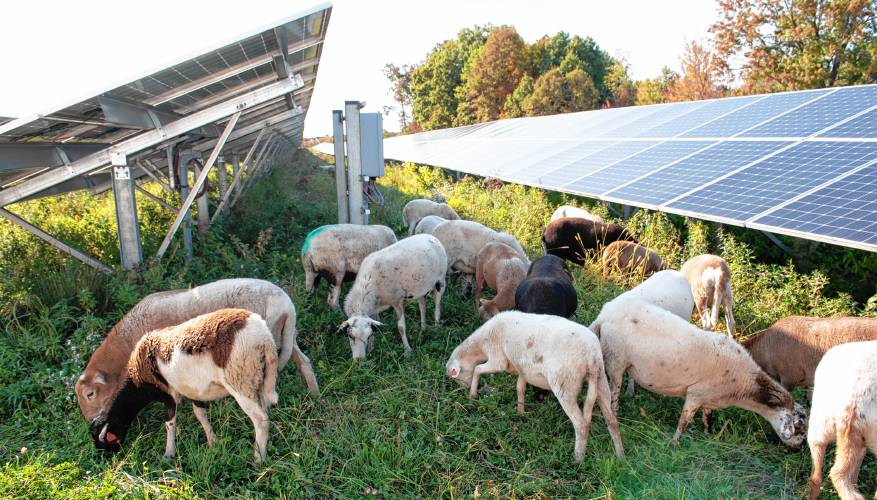
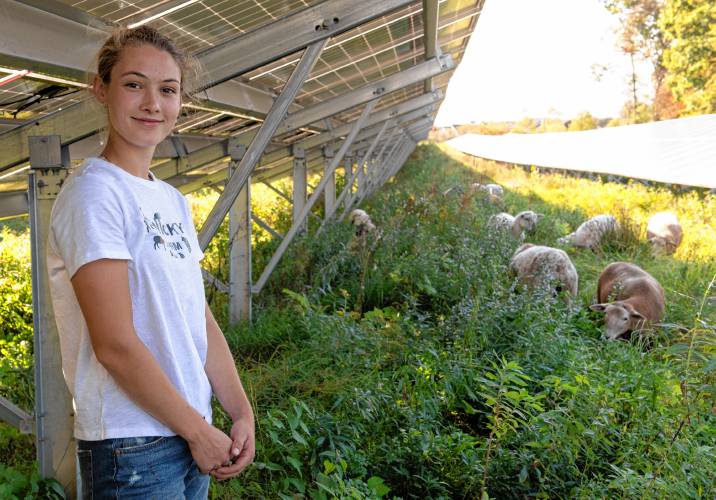
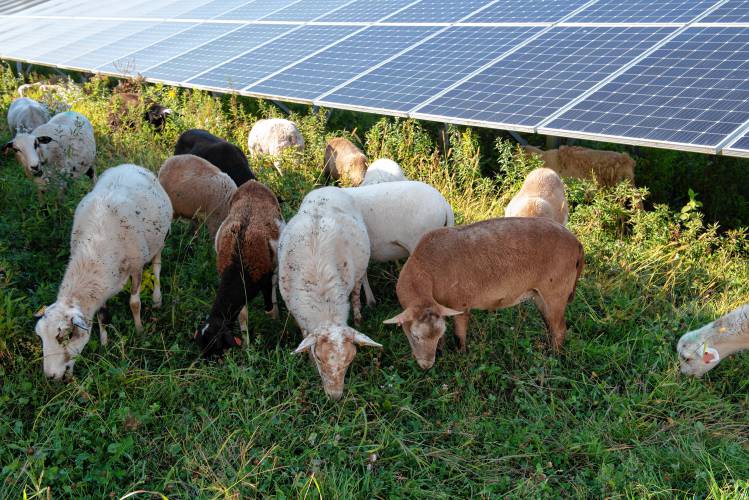
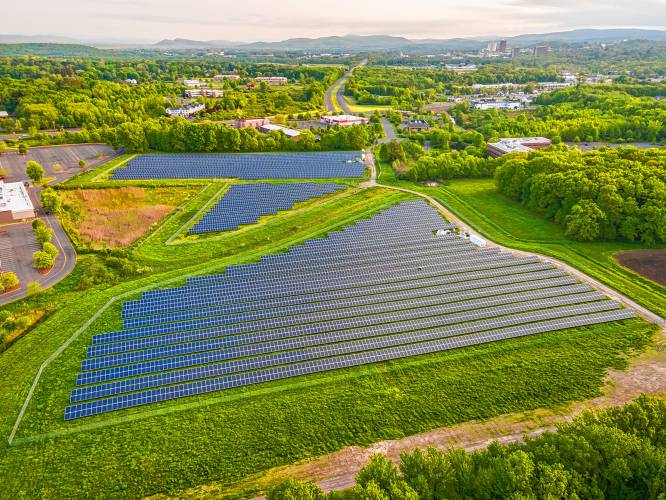
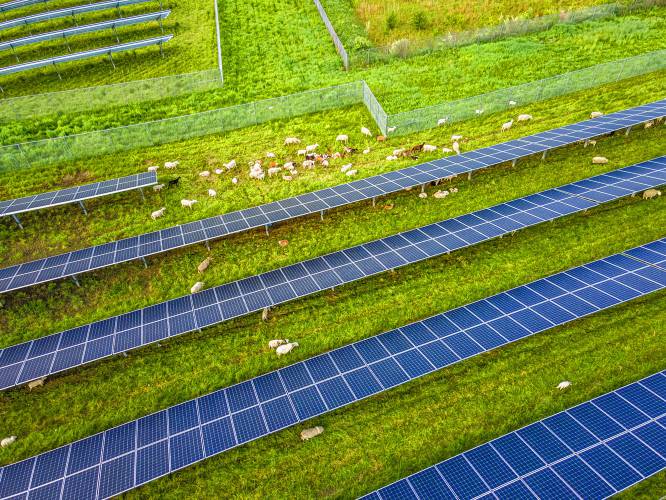






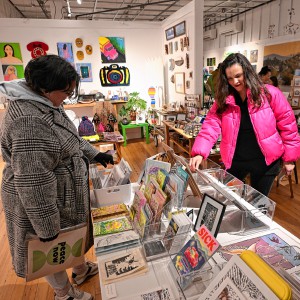 ‘It’s a Wonderful Night in Turners Falls’ showcases village businesses, nonprofits
‘It’s a Wonderful Night in Turners Falls’ showcases village businesses, nonprofits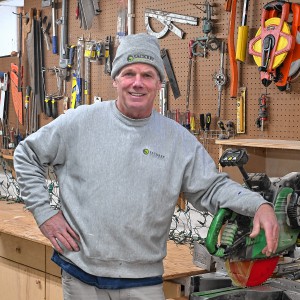 Sackrey Construction Co. of Sunderland celebrating 35 years in business
Sackrey Construction Co. of Sunderland celebrating 35 years in business Photo: As darkness falls
Photo: As darkness falls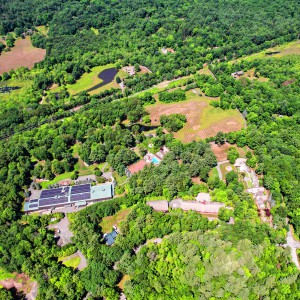 Leverett residents rap Kittredge compound plans, urge caution as negotiations for 400 homes move forward
Leverett residents rap Kittredge compound plans, urge caution as negotiations for 400 homes move forward 
